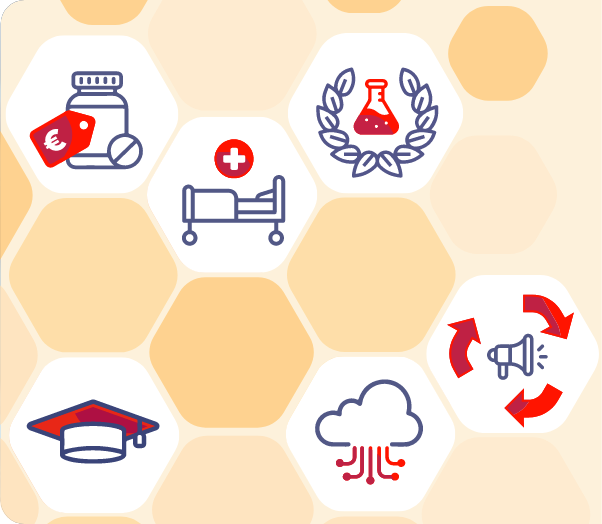Inherited cardiovascular diseases often run in families, with a 50% chance of passing on the disease-causing genetic defect to children. When a genetic mutation is found in the first family member diagnosed (called the proband), other relatives can get tested to see if they have the same mutation and – when they are carrier - be monitored and timely treated if needed. Unfortunately, less than half of the at-risk relatives don't seek genetic counseling in the first years of the proband's diagnosis. The eCG (electronic Cardiovascular Genetics) Family Clinic was created to stimulate families to test themselves after the diagnosis of the proband by making this process easier and more accessible.
The Research
In the eCG Family Clinic consortium, a team of software experts, doctors, and specialists in ethics, law, economics, communication, and psychology work together to develop and implement a virtual clinic that offers personalized information and support through a virtual assistant, allowing relatives to make informed decisions about testing and treatment.
Because this consortium believes that involving all possible affected stakeholders is crucial for its success, it frequently consults with probands, family members, healthcare professionals, and advocates to understand their needs. The prototype is designed while keeping the important economic, ethical, and legal aspects of this new approach in mind. The prototype of the eCG Family Clinic is tested in real healthcare settings to see how well it works compared to current practices
Origin
This project is funded within the Innovative Medical Devices Initiative (IMDI) program 'Heart for Sustainable Care'. The focus of this program is the development of medical technology for the earlier detection, monitoring, and better treatment of cardiovascular diseases to ensure accessible healthcare and sufficient staffing. The program has been developed en funded by the Dutch Heart Foundation, ZonMw and NWO, who collaborate within the Dutch CardioVascular Alliance.
